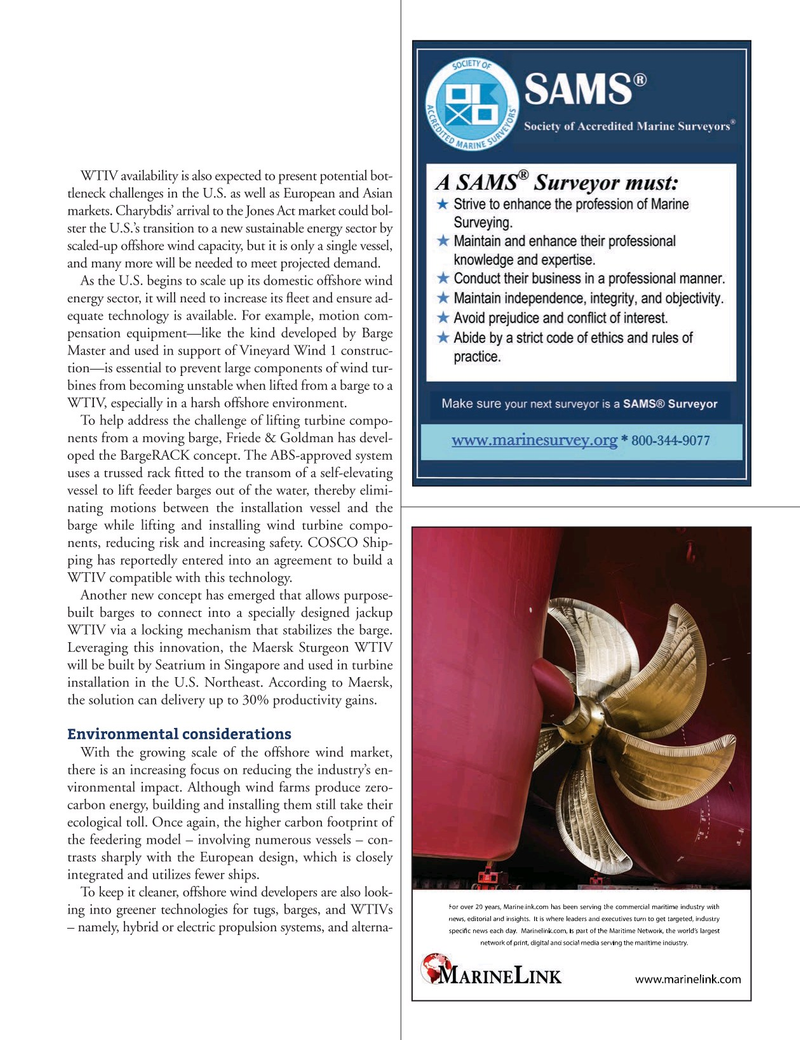
Page 29: of Marine News Magazine (October 2024)
Read this page in Pdf, Flash or Html5 edition of October 2024 Marine News Magazine
WTIV availability is also expected to present potential bot- tleneck challenges in the U.S. as well as European and Asian markets. Charybdis’ arrival to the Jones Act market could bol- ster the U.S.’s transition to a new sustainable energy sector by scaled-up offshore wind capacity, but it is only a single vessel, and many more will be needed to meet projected demand.
As the U.S. begins to scale up its domestic offshore wind energy sector, it will need to increase its ? eet and ensure ad- equate technology is available. For example, motion com- pensation equipment—like the kind developed by Barge
Master and used in support of Vineyard Wind 1 construc- tion—is essential to prevent large components of wind tur- bines from becoming unstable when lifted from a barge to a
WTIV, especially in a harsh offshore environment.
To help address the challenge of lifting turbine compo- nents from a moving barge, Friede & Goldman has devel- oped the BargeRACK concept. The ABS-approved system uses a trussed rack ? tted to the transom of a self-elevating vessel to lift feeder barges out of the water, thereby elimi- nating motions between the installation vessel and the barge while lifting and installing wind turbine compo- nents, reducing risk and increasing safety. COSCO Ship- ping has reportedly entered into an agreement to build a
WTIV compatible with this technology.
Another new concept has emerged that allows purpose- built barges to connect into a specially designed jackup
WTIV via a locking mechanism that stabilizes the barge.
Leveraging this innovation, the Maersk Sturgeon WTIV will be built by Seatrium in Singapore and used in turbine installation in the U.S. Northeast. According to Maersk, the solution can delivery up to 30% productivity gains.
Environmental considerations
With the growing scale of the offshore wind market, there is an increasing focus on reducing the industry’s en- vironmental impact. Although wind farms produce zero- carbon energy, building and installing them still take their ecological toll. Once again, the higher carbon footprint of the feedering model – involving numerous vessels – con- trasts sharply with the European design, which is closely integrated and utilizes fewer ships.
To keep it cleaner, offshore wind developers are also look- ing into greener technologies for tugs, barges, and WTIVs – namely, hybrid or electric propulsion systems, and alterna-

 28
28

 30
30
